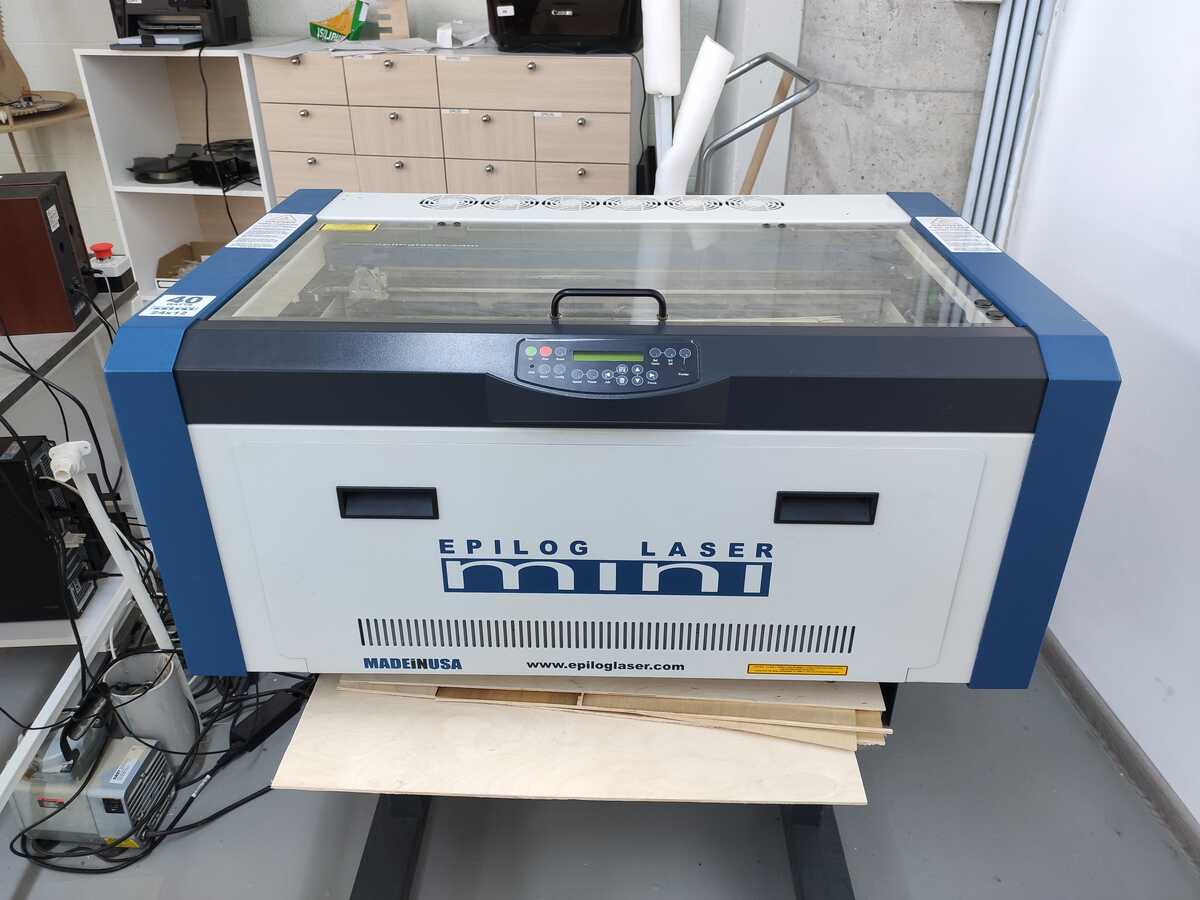3. Computer controller cutting¶
This week we worked on characterizing our lasercutter’s focus, power, speed, rate, kerf, joint clearance and types.
At Dilijan Fab Lab, we enjoy the presence of a 40 W Epilog Mini 8000. It is a CO2 laser machine which can be used to make precision cuts in various materials from cardboard and wood to acrylic and glass. It has a working area of 61.0 x 30.5 cm (24” x 12”).
Its accuracy is to 0.254 mm (.01 inches), and it can perform raster cuts to engrave something on different materials, or use vector cut to cut through them.

A word of caution though: Since there is no exhaust system directed outside the building our lasercutter, it is not recommended to cut acrylic or anything with toxic fumes. In case of need, precaution should be taken by wearing masks and leaving the doors and windows open.
Speed, power, frequency¶
The speed and power for various raster engravings, and the speed, power, and frequency for various vector cuttings performed by our 40 W Epilog Mini are listed on page 197 of the Owner’s Manual for Epilog Mini/Helix - Model 8000, which is reproduced below. The last line for the cardboard has been added after experimenting with our lasercutter.
| 300 DPI Raster Engraving Speed/Power |
400 DPI Raster Engraving Speed/Power |
600 DPI Raster Engraving Speed/Power |
Vector Cutting Speed/Power/Frequency |
|
|---|---|---|---|---|
| Wood Cherry – Alder - Walnut | 40/100 | 50/100 | 60/100 | ⅛” (3 mm) – 40/100/500 ¼” (6 mm) – 10/100/500 (multiple passes may allow cutting of thicker materials) |
| Acrylic | 100/70 | 100/60 | 100/50 | ⅛” (3 mm) – 12/100/5000 ¼” (6 mm) – 8/100/5000 (multiple passes may allow cutting of thicker materials) |
| AlumaMark | 80/30 | 80/25 | 80/20 | N/A |
| Anodized Aluminum | 100/60 | 100/50 | N/ | |
| Painted Brass | 100/65 | 100/55 | 100/45 | N/A |
| Marbleized Painted Brass | 100/75 | 100/65 | 100/55 | N/A |
| Corian Or Avonite | 20/100 | 25/100 | 30/100 | ⅛” (3 mm) – 20/100/5000 |
| Delrin Seals | 100/70 | 100/60 | 100/50 | 50/100/500 |
| Glass | 25/100 | 35/100 | 45/100 | N/A |
| Laserable Plastic | 100/50 | 100/45 | 100/40 | 20/80/5000 |
| Leather | 100/40 | 100/35 | 100/30 | ⅛” (3 mm) - 50/90/500 |
| Marble | 20/100 | 25/100 | 30/100 | N/A |
| Mat board | 100/65 | 100/55 | 100/45 | 30/40/500 |
| Melamine | 40/100 | 50/100 | 60/100 | N/A |
| Stainless Steel With Cerdec Coating | N/A | 35/100 | 40/100 | N/A |
| Rubber & Rubber Stamps | 10/100 | 20/100 | 30/100 | 15/100/100 |
| Cardboard | NA | NA | NA | 20/50/500 |
Kerf¶
When cutting through, the laser burns away a portion of the material. This is measured in width of material burned away, and is called the laser kerf. The laser kerf can range from 0.08 mm - 1 mm depending on the material type and other factors. A kerf of 0.45 mm is experiences when cutting thick foams. More info on this can be read here.
In order to characterize the kerf of the lasercutter, the following comb was created. The thickness of the cardboard was measured at 3.97 mm with a micrometer and there were 4 dents. The dents start at 3.80 mm and each subsequent dent increases by 0.05mm.
Two combs were then printed and while the 3.80 mm dents were slightly loose, the 3.95 mm dents were almost too tight. The 3.85 mm seemed to be the right size, which means about 0.12 mm had been burned off of the cardboard for it to fit, so the kerf should be approximately 0.12 mm.
Alternatively, the kerf measured for the same lasercutter in 2020 was 0.09 mm.
